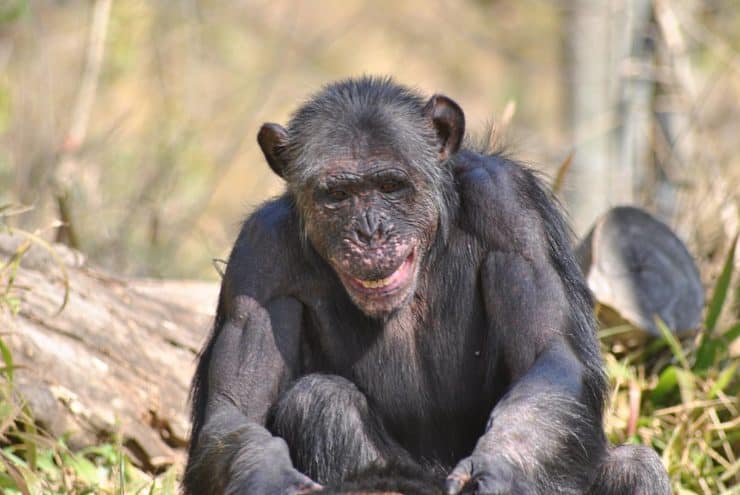Depending on who you ask, humans and chimps share 96 to 99 percent of genes. Yet we look staggeringly different. Or do we? Since genes alter our traits, we would expect organisms with so much of their genome identical, also look similar, right?

Well, yes, but no. Let’s initially put aside the fact that we might not be so different from chimps after all. We indeed are similar in many ways: our anatomy and physiology are almost identical. They even have fingerprints similar to ours. Social interactions among chimps, their emotions, and even their intelligence are quite comparable to ours. Among other things, chimps, like us, laugh when they are tickled and kiss romantically. The thing is, we are not 99% similar.
How many genes do we share with chimps?
The problem with our genetic similarity is that we quite often do not give much thought to what does it mean to be 99% percent similar to chimps. Or are we 98 percent the same? Well, in fact, we are 98.77%, except that we are not.
The number comes from a study published in Nature in 2005, which is a good one, yet it never said that we are 98.77% similar to chimps. It noted that at places that can be compared, there are 1.23% differences.
The key here is that these are changes at DNA location that we can find an analogous sequence in both species. However, if a part of DNA is deleted in one of the species, we can’t compare them. It turns out that these changes account for an additional three percent of different DNA among humans and chimps. This makes 98,77% similarities a considerable exaggeration.
See how National Geographic reported the findings back in 2005. They state the 96 percent difference, which is a more precise judgment, yet it is not all that there is.
How do we treat changes when a chunk of DNA has moved or copied someplace else or is inverted? What about a fusion of human chromosomes? Do we consider it as a change in DNA or not? All the genes are still there, and DNA reading machinery reads those parts without problems. In essence, it does not matter how we treat them, because changes in genome sequences do not necessarily represent changes in appearance or physiology.
Small changes in DNA can create substantial differences
When media reports that we and chimps are 98% percent identical in DNA, it also implies that our appearances are to the same degree similar. But they aren’t.
What makes species more different is not what genes do they have, but in what situations these genes are turned on or off. It means that even small changes can have a high impact on the result.
For example, human and chimpanzee hair isn’t that much different, and the genes to make them must be similar. However, the amount of hair varies a lot among these two species, which means that the difference comes not from genes to make hair, but from a part that instructs how much hair must be made.
In essence, a mutation that turns off the gene to make the hair at specific locations does not need to be large. So, here, small changes in the DNA can account for a significant difference in the appearance of the resulting organism.
And on top of that, I can also mention that difference is a relative measure. Of course, we can say that humans and chimps look different if we compare these two species in isolation. However, we can say that humans and chimps are quite similar if we compare us both to, let’s say, cats, with whom we share 90 percent of the genome.